A scholar and bona fide Parlekar spends a decade documenting the stories about the people and institutions that defined the suburb for a new Marathi biography

Indologist and art historian Sandeep Dahisarkar at the gaothan in Vile Parle, which formed the nucleus of the original settlement. Pic/Sameer Markande
In popular discourse, Vile Parle is just another Bombay suburb, sandwiched, or rather lost, between its two famous friends, Bandra and Andheri. This, despite enjoying the rare distinction of having an eponymous biscuit, cake and confectionary brand make the neighbourhood its home, putting Parle, the name, on the global food map. For most Mumbaikars, this is Vile Parle’s only claim to fame, and of course, the nostalgic whiff of baked biscuits once hanging over its air, a memory glued into the city’s consciousness. But what else?
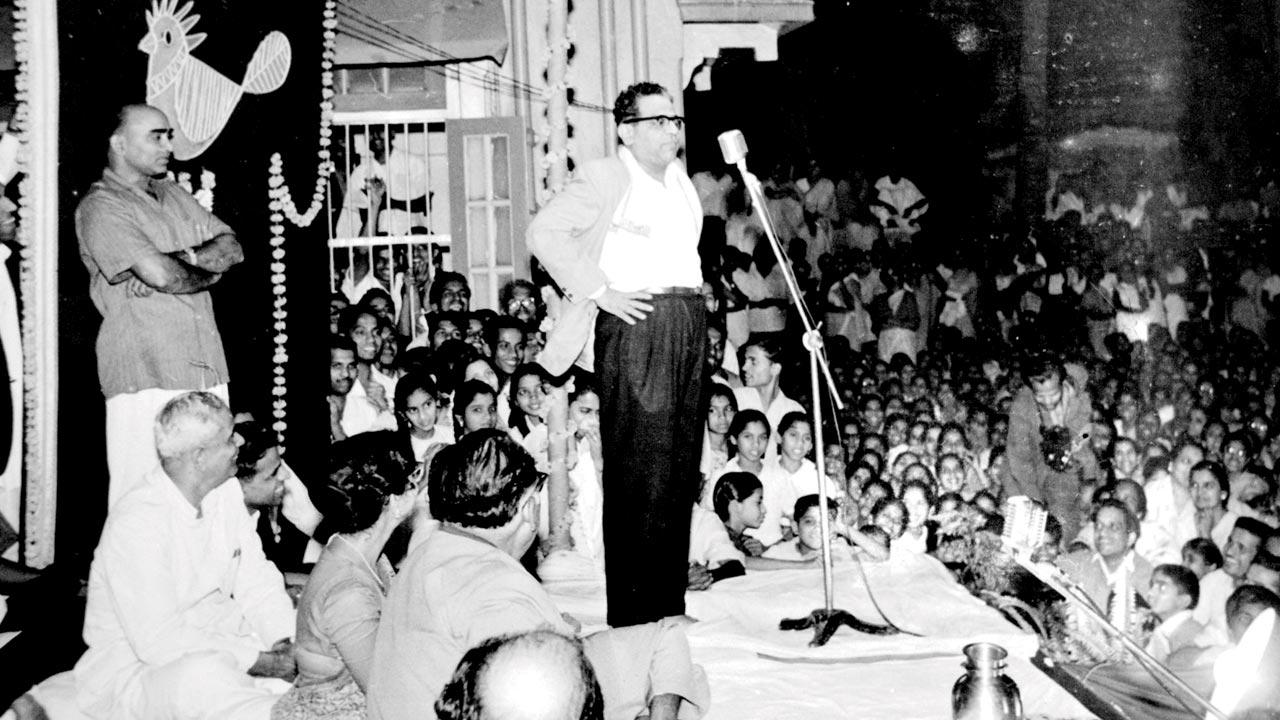 PL Deshpande during an event organised by the Vile Parle Music Circle at Tilak Mandir, where he was felicitated for becoming president of the Nanded Natya Sanmelan. Pic Courtesy/Jayant Deshpande
PL Deshpande during an event organised by the Vile Parle Music Circle at Tilak Mandir, where he was felicitated for becoming president of the Nanded Natya Sanmelan. Pic Courtesy/Jayant Deshpande
Indologist and art historian Sandeep Dahisarkar, who has been a Vile Parle resident for the last 30 years, remembers being curious about the neighbourhood, since his student years. “Around 2010, while I was in college, I started writing about the area’s history,” he says. Two years later, one of his essays on the temples of Vile Parle was published in a book. Conducting heritage walks in the neighbourhood was a concomitant response to his work. “But all through this time, I had been wanting to come up with something, which was well-researched, and connected the dots of the forgotten past of Vile Parle.”
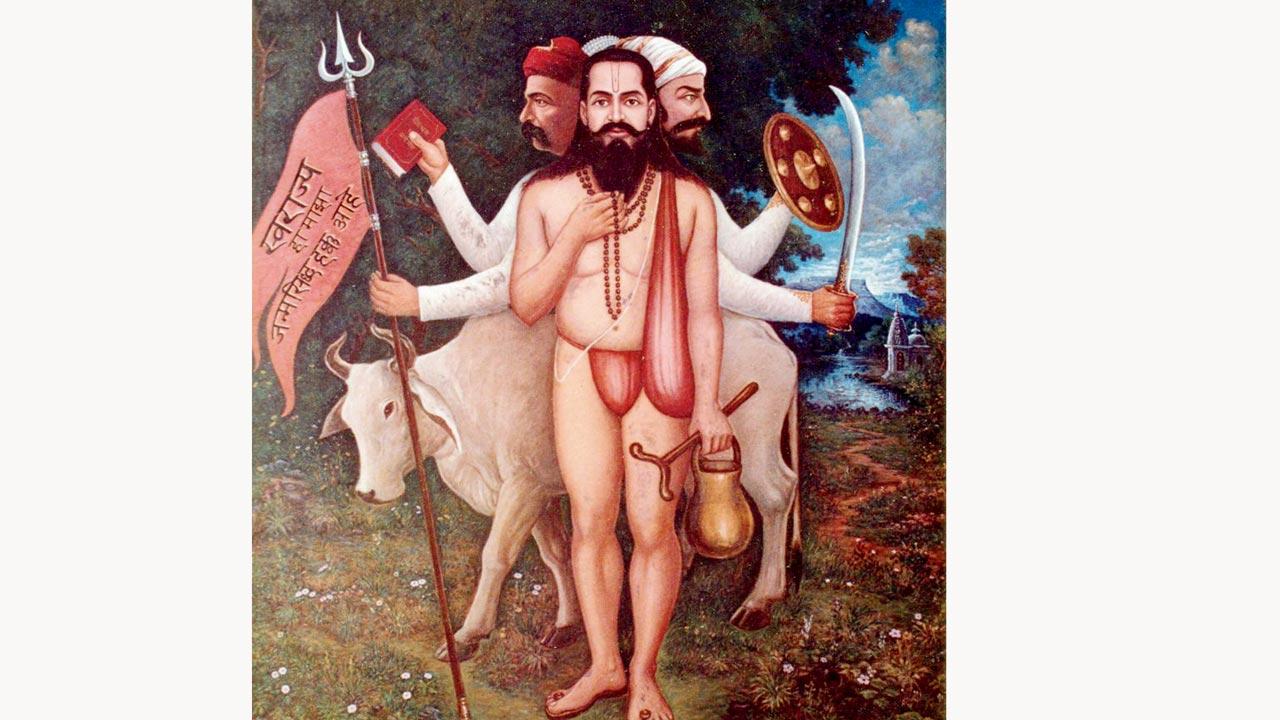 A 1947 Trimurti oil painting of Lokmanya Tilak, Chhatrapati Shivaji Maharaj and Ramdas Swami by Shripad Shamrao Jayakar. Pic Courtesy/Kishor Jayakar
A 1947 Trimurti oil painting of Lokmanya Tilak, Chhatrapati Shivaji Maharaj and Ramdas Swami by Shripad Shamrao Jayakar. Pic Courtesy/Kishor Jayakar
Dahisarkar’s new 200-page biography, Parle: Dnyat-Adnyat (Sahit Prakashan, Goa), released this week in Marathi, offers a wholesome portrait of how Vile Parle came into its own in the early 20th century. Apart from exhaustive personal research, the book dips into family and institutional archives, as well as Mumbai Archives of the Directorate of Archives, to publish rare and previously unpublished documents, maps and photographs. The creation of Parle, like most suburbs of Bombay, was spurred by the plague epidemic of 1896, which necessitated the de-cluttering of the island city. In a span of hundred years, the entire landscape of the region was transformed and urbanised, he says. The Parle gaothan that today abuts the Vile Parle East station, and which was known as Pakhadi, was the erstwhile nerve centre of the agrarian village. “This was where the original settlers came to live. The residents were predominantly East Indian Christians. But, city historian Teddie Rodrigues in his book on the community mentions that the original inhabitants of the village were actually Pachkalashis or Pathare Kshatriya Hindus [the warrior group that’s said to have travelled with Prince Mahi Bimba, son of Raja Pratap Bimba to this region as early as 1138 CE, in one of the earliest known migrations here].” They were perhaps converted after the Portuguese take-over of Salsette or Sashti Island, he says. The gaothan then was surrounded by vast tracts of land, where locals grew everything from rice, cucumbers, ladyfingers, pumpkin, to chibud, a popular fruit in the area.
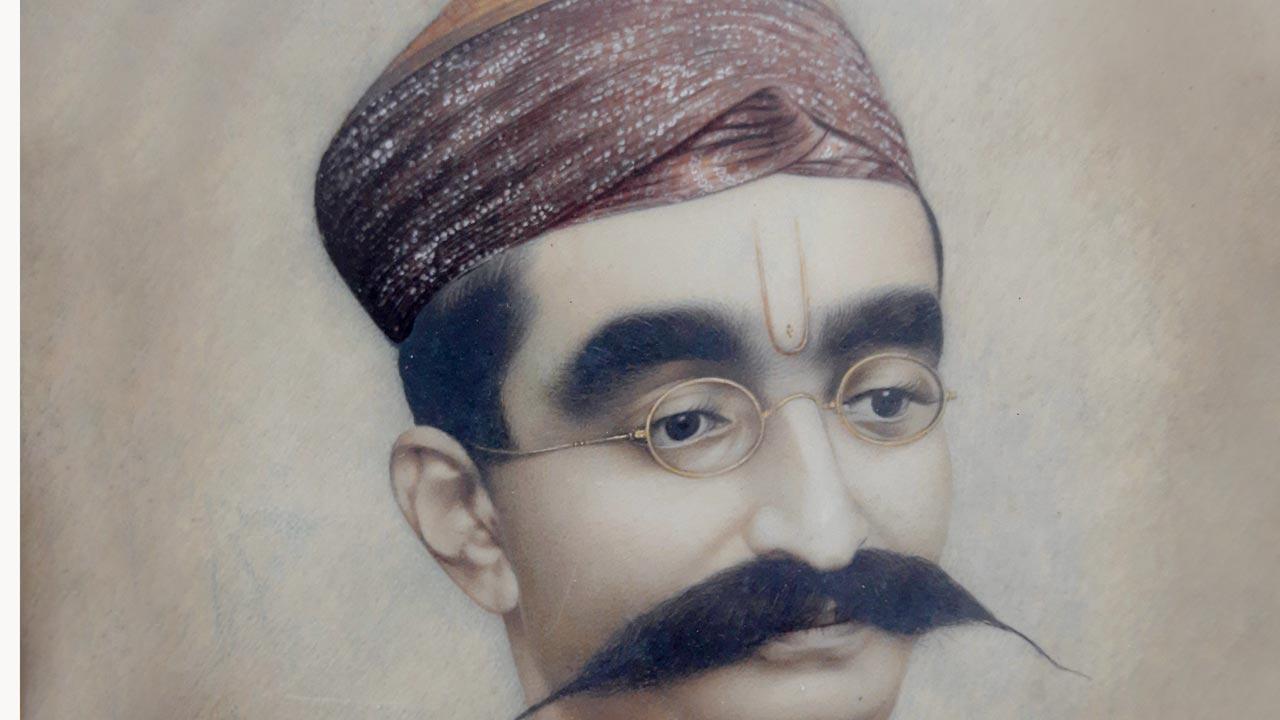 Govardhandas Tejpal
Govardhandas Tejpal
It’s during the British rule that these rice fields slowly began to be sold to non-Christians, and that’s how a large Marathi-speaking Hindu population came to inhabit the area; the move was bolstered by the epidemic that had swept through the island city, forcing people to move out of crammed neighbourhoods. The illustrious Gujarati Tejpal family had a crucial role to play in its urban transformation. “The Tejpals wanted to build a house of their status in Vile Parle, but there was no railway station in the area to allow for ease of delivery of construction materials. Govardhandas Tejpal [present-day GT Hospital is named after his father Gokuldas Tejpal] donated a section of their land to the railways to build a station. The station came up in 1907, and the construction of their home, Mor Bungalow, was completed by 1908.” The bungalow inspired by Gothic and Neoclassical styles, was the brainchild of Parsi architect Nusserwanji Sanjana, and was built at the cost of Rs 1,78,210.19. “It boasted a huge dome, marble statues and stained-glass windows, and included a stable, a guest house, well, fountain and a garden.” The lavish structure continued to remain a jewel in Vile Parle’s crown, until it was demolished in 1957. Today, the building has made way for the Deenanath Mangeshkar Natyagriha, Agarwal Market and Municipal Market in Vile Parle East. “Several sabhas were organised within the premises of the bungalow, including those spearheaded by Subhas Chandra Bose, Acharya Kripalani, Sane Guruji and Narhar Vishnu [Kakasaheb] Gadgil.” Tejpal, says Dahisarkar, appears to have indirectly supported the freedom movement. He was also the president of the Parle Hindu Devalaya Mandal and Parle Residents Association, the latter was founded in Mor Bungalow, and liaised with the government to address issues of the residents, and look into the town planning schemes. His wife, Monghibai Tejpal, took over the reins after her husband’s death, selling plots of land in Vile Parle under the Tejpal Scheme. Today, all that remains of the Tejpal family is the Vitthal Rakhumai Mandir.
 An archival image of Mor Bungalow, owned by the Tejpal family, circa early 20th century CE. Pics Courtesy/The Tejpal Family Collection
An archival image of Mor Bungalow, owned by the Tejpal family, circa early 20th century CE. Pics Courtesy/The Tejpal Family Collection
Vile Parle’s greatest contribution was to the freedom struggle. Several underground revolutionaries were galvanised by the Vile Parle Chhavani. When the Salt Satyagraha took place in Dandi on April 6, 1930, Gandhi’s supporters also undertook the satyagraha in Juhu, Vile Parle West. Gandhian and industrialist Jamnanlal Bajaj, chief of the Vile Parle Chhavani, was arrested the following day, shares Dahisarkar.
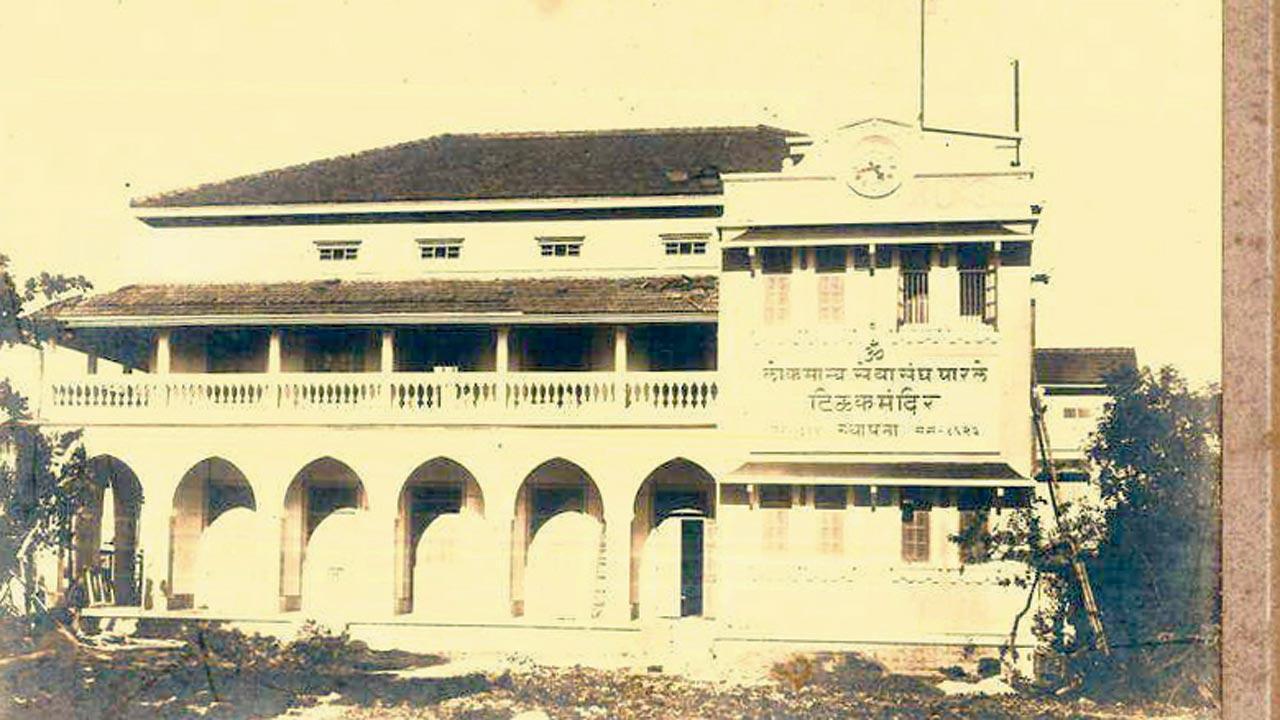 An archival image of Lokmanya Seva Sangh’s Tilak Mandir
An archival image of Lokmanya Seva Sangh’s Tilak Mandir
The Lokmanya Seva Sangh, which is in its centenary year, continues to be the beating heart of the neighbourhood. It was started in 1923 to promote religious, social and artistic movements—Ganeshotsav, Shiv Jayanti, and Tilak’s death anniversary were the three most significant events on its calendar. A trimurti painting by the late Shripad Shyam Rao Jayakar of Lokmanya Tilak, Chhatrapati Shivaji Maharaj and Ramdas Swami—the torchbearers of Swarajya—is displayed at the organisation’s Tilak Mandir hall today. The original version of the painting, published in the book, was created by Jayakar’s father Shyam Rao Jayakar, the artist who painted Sai Baba. “The Tilak Mandir had a library and gymnasium for students, and educated people about Swarajya, while also shaping public opinion through lectures and sessions. It continues to be an important cultural centre even today,” says Dahisarkar. In May 1930, Babu Hule, a volunteer of Vile Parle Chhavani, died under a British Calvary officers horse. His body was brought in procession to Tilak Mandir. “PL Deshpande who was born in Gamdevi, but was raised in Vile Parle, writes fondly about the institution in one of his books. This is the same place that houses his awards and rare photographs in a small gallery today.” Actress and educationist Dr Samira Gujar-Joshi has contributed the essay on Deshpande in the book.
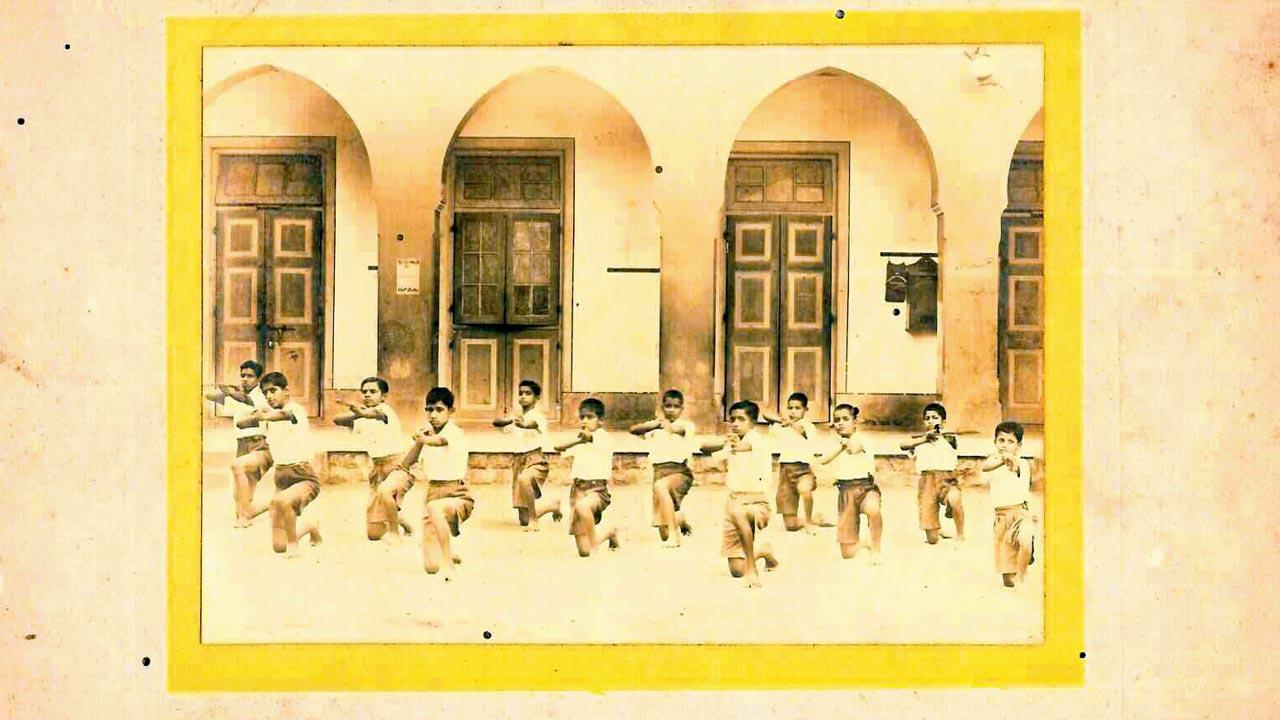 Children practising lathi on Tilak Mandir ground. Pics Courtesy/Lokmanya Seva Sangh, Parle
Children practising lathi on Tilak Mandir ground. Pics Courtesy/Lokmanya Seva Sangh, Parle
Another important exercise undertaken by Dahisarkar was documenting the Art Deco buildings in Vile Parle—19 residential buildings and two temples, of which only 16 remain. He even commissioned detailed line drawings of the unique geometric and wavy patterns on the gates, windows and facade, all of which have been published in the book.
The history of the neighbourhood would be incomplete without the mention of the iconic Parle-G factory, started in 1929 by Narottam Mohanlal Chauhan. A visit to the candy factories of Germany prompted Chauhan to start one in the neighbourhood, which began by making boiled sweets and peppermint. By 1939, the year the Second World War began, the company started producing Parle’s gluco biscuits, later known as Parle-G. “The coming up of the factory meant that the village was slowly moving towards urbanisation. It also provided employment opportunities to Parlekars,” he says, adding that the factory has now moved to Khopoli.
This is the fourth book written on Vile Parle. While the previous ones were penned by history enthusiasts, this is the first by an academic scholar, and that’s what makes it different. “I want to make Parlekars and history readers understand that there is a way of reading and absorbing history. It has to be done systematically, thoroughly and with enough background and documentation. My hope is that this book serves as a reference guide that not only celebrates Parle and its people, but also helps us understand how this suburb’s past has shaped and influenced its present.”
1929
Year the iconic Parle factory was launched by Narottam Mohanlal Chauhan after a visit to Germany, where he learnt the production of candy
 Subscribe today by clicking the link and stay updated with the latest news!" Click here!
Subscribe today by clicking the link and stay updated with the latest news!" Click here!










